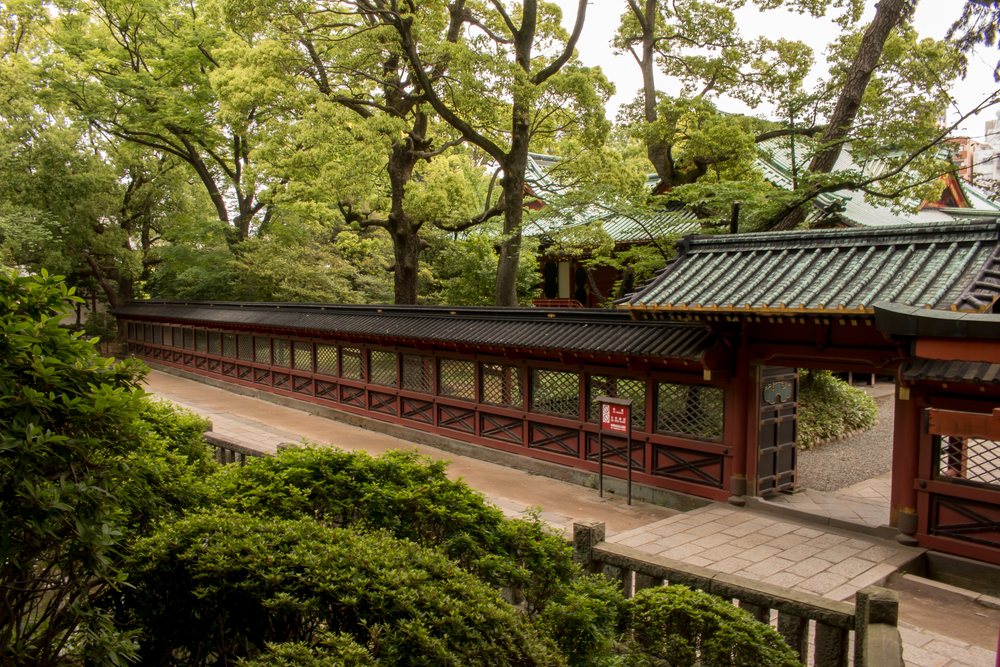The Association of Shinto Shrines and the G7 Summit

Please note that we are not authorised to provide any investment advice. The content on this page is for information purposes only.
When the leaders of G7 countries descend on Japan later this week, Prime Minister Shinzo Abe has taken the opportunity to invite them to visit Ise Shrine as well. Although there were many reasons for the choice of Ise-Shima as location for the summit, it is impossible to ignore the underlying sentiments of religious nationalism.
When the leaders of G7 countries descend on Japan later this week, Prime Minister Shinzo Abe has taken the opportunity to invite them to visit Ise Shrine as well. Although there were many reasons for the choice of Ise-Shima as location for the summit, it is impossible to ignore the underlying sentiments of religious nationalism.
Ise Shrine is the spiritual centre of the Association of Shinto Shrines (AoSS). AoSS is an umbrella organisation for a large majority of Shinto shrines across Japan, established in 1946 to protect Japan’s shrines after they lost the support of the state.
The association has also grown to be an influential actor on the political stage. The political wing of AoSS, the Shinto Association of Spiritual Leadership, boasts the support of a number of cabinet ministers, including Abe. It has carried out extensive lobbying on issues such as the mandatory singing of the Japanese national anthem in public schools and the public display of the national flag.
AoSS also retains informal but intimate ties with the Japan Conference (Nippon Kaigi), which includes the high priest of Ise Shrine amongst its members. While Japan Conference focuses on a broader range of political issues than AoSS, both organisations share the same brand of postwar ‘Imperial Shinto’, placing the Emperor at the centre of the Japanese nation.
Despite a history going back at least 1400 years, Ise Shrine’s role as a centre for national Shinto is a product of Japanese modernity, closely related to the development of so-called ‘State Shinto’ under the Meiji Restoration in the late 19th century.
However, whereas the Yasukuni Shrine in Tokyo is the target of domestic and international criticism due to the enshrinement of war criminals, Ise Shrine is perceived as far less controversial. This seems to be one of the reasons behind Abe’s decision to frequent Ise Shrine and, with the exception of one visit in December 2013, refrain from visiting Yasukuni.
Besides visiting the Shrine for his hatsumÅde (first shrine visit of the year) every January, a practice that has been common for Prime ministers since the 1960s, Abe and eight of his cabinet ministers were also present during the enshrinement rites following the rebuilding of the shrine in 2013. This made Abe the first prime minister to do so in the postwar era.
In one sense, the symbolic value of Abe’s promotion of Ise Shrine is similar to his predecessor Junichiro Koizumi’s frequent visits to Yasukuni Shrine: visits to these shrines cater to the sentiments of the same supporters on the nationalist right.
In present-day Japan, Shinto continues to play a central role in the politics of the nation. Many of the people visiting shrines for hatsumÅde in January this year were surprised to find petitions for constitutional reform.
These petitions were part of the campaign KenpÅ 1000 initiated by the Japan Conference subgroup Citizens’ Association for the Creation of a Constitution for Beautiful Japan. The campaign, which seeks to garner public support for the Abe-led Liberal Democratic Party (LDP) initiative to revise the constitution later this year, is run with the official support of the AoSS.
Since 2013, Abe has worked hard to initiate constitutional reform. The draft constitution that Abe is promoting is the same as that published by the LDP in 2012. As such, it contains changes to the constitution that could undermine the foundations of postwar Japanese democracy.
The draft has also been written specifically to accommodate renewed ties between the state and the Shinto establishment.
Articles 20 and 89 of Japan’s postwar constitution provide for a strict separation of religion and state, in effect prohibiting the state and its organs from sponsoring religious organisations. The Japanese Supreme Court’s landmark ruling in the 1997 Ehime case put Shinto on equal terms with other religions. Where justices in earlier postwar cases had often considered Shinto rites to be something other than religion, the Ehime case made it harder for political actors to visit shrines in their official capacity.
In the 2012 LDP draft, Articles 20 and 89 have been subtly altered to accommodate state involvement in Shinto rites that were generally allowed prior to the Ehime ruling. The state is no longer allowed to interact with religion, but those things that are not religious — such as ‘social courtesy’ or ‘manners and customs’ — are still exempt.
Under the pre-1997 paradigm, this would include groundbreaking ceremonies, rites in front of chÅ«konhi (monuments to the souls of soldiers killed in battle), and the enshrinement of Self-Defense Force officers at Yasukuni Shrine — precisely the sort of activities in which AoSS would likely be involved.
Abe will visit Ise Shrine together with the leaders of the G7 nations on the first morning of the summit.
By doing so, he will be playing into the hands of forces in Japan that seek to encourage closer ties between the Shinto establishment and the state. A visit to Ise Shrine can be seen as a quiet form of sponsorship of the AoSS, an organisation currently working hard to assist the LDP in their quest for a complete overhaul of the postwar constitution.
G7 summit plays into Japan’s constitutional politics is republished with permission from East Asia Forum




